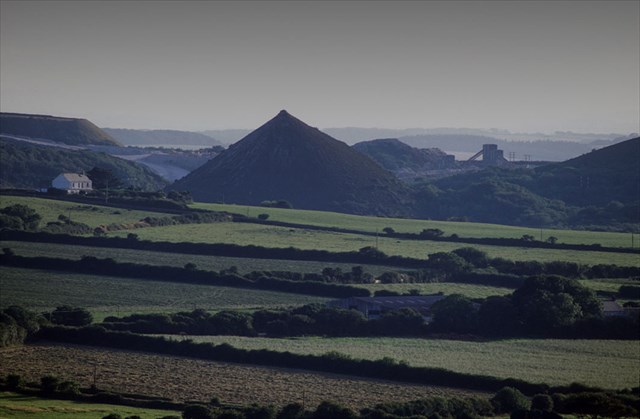China Clay – The Geology bit
Around 270-295 million years ago, intense subterranean activity led to masses of molten rock being forced towards the earth’s surface. When the rock cooled, it became granite, a rock made of a mixture of quartz, feldspars and micas. Millions of years of weathering and other earth processes have changed the nature of some deposits of granite. Geologically and economically speaking, the most significant change that has affected the granite has been chemical alteration, principally kaolinisation, forming the kaolin (china clay) deposits. This occurred when the feldspar crystals in granite were altered, and they turned into the hydrated aluminium silicate mineral kaolinite or kaolin.
China Clay – Discovery and Extraction Process
The first Cornish china clay deposits were found by William Cookworthy in 1746, much further west at Tregonning Hill. In the 1750’s the massive deposits in the St Austell area were also discovered.
The china clay was (and still is!) used in the production of porcelain, pottery, paper, pharmaceuticals and as a filler in many other everyday items.
China Clay in St Austell is extracted via open-cast mining, unlike the underground mineral mines throughout Cornwall. The China Clay extraction process firstly requires the removal of ground overlying the deposit. This is known as overburden, which can vary in depth between one and fifteen metres. Once the clay is exposed, a hydraulic mining process is used. This means, that a jet of water under enormous pressure is fired at the pit face from a water cannon known in the industry as a monitor. This liberates the china clay from the quarry face, together with the waste quartz and mica. The whole lot forms a slurry that is piped to sites for refining.
China Clay – Then and Now
By the early nineteenth century the China Clay industry in St Austell was big business. The St Austell deposits had emerged as the largest in the world. By the mid 19th century seven thousand workers were employed in the St Austell area, producing 65,000 tonnes of china clay every year. By 1910, Cornwall was producing some fifty per cent of the world's china clay, something in the region of a million tonnes every year - seventy-five percent of which was exported overseas.
The china clay industry in St Austell is now sadly in decline with cheaper foreign sources now being used. However the industry has left its mark on the landscape around St Austell as every ton of usable china clay that was mined brought with it 9 tonnes of waste. The Cornish Alps, as they are more commonly referred to are the spoil tips from the clay pits which were deposited in large, originally white, conical mounds. Over recent years some of these have been landscaped and flattened to from a less surreal landscape. In fact you are standing on a China Clay spoil tip that has been profiled and re-vegetated to create an important habitat known as lowland heath.
In order to claim this EarthCache, please email me through my profile at the top of this page with the answers to the following questions:
1. Looking south towards the sea, most of the landscape you can see has been changed by the china clay industry. How many conical sky tips can you see?
2. Leading up to the top of the largest and closest sky tip, you will see a long ridge line. Describe how you think the sky tip was formed to leave this feature?
3. The sky tips are also affectionately known as the White Alps due to their colour. Which minerals are likely to give them this white colour?
4. At the foot of the sky tip with the ridge, there is a lagoon known as a mica dam. In the right conditions, the mica refracts sunlight and makes the water look a pretty green/blue colour. Whilst quartz separated quickly the mica takes years to settle in these lagoons. Suggest a reason why.
5. The industry now builds flatter but wider spoil tips rather than the tall conical sky tips? Suggest a reason for this.
Optional task: Post a photo of yourself or your GPSr with the Alps in the background.
Feel free to log your find without having to wait for an email from me. However, if your answers are not correct, incomplete, I will contact you by e-mail to verify your find.
Thanks for taking the time to visit this Earthcache and I hope you enjoy your visit.
